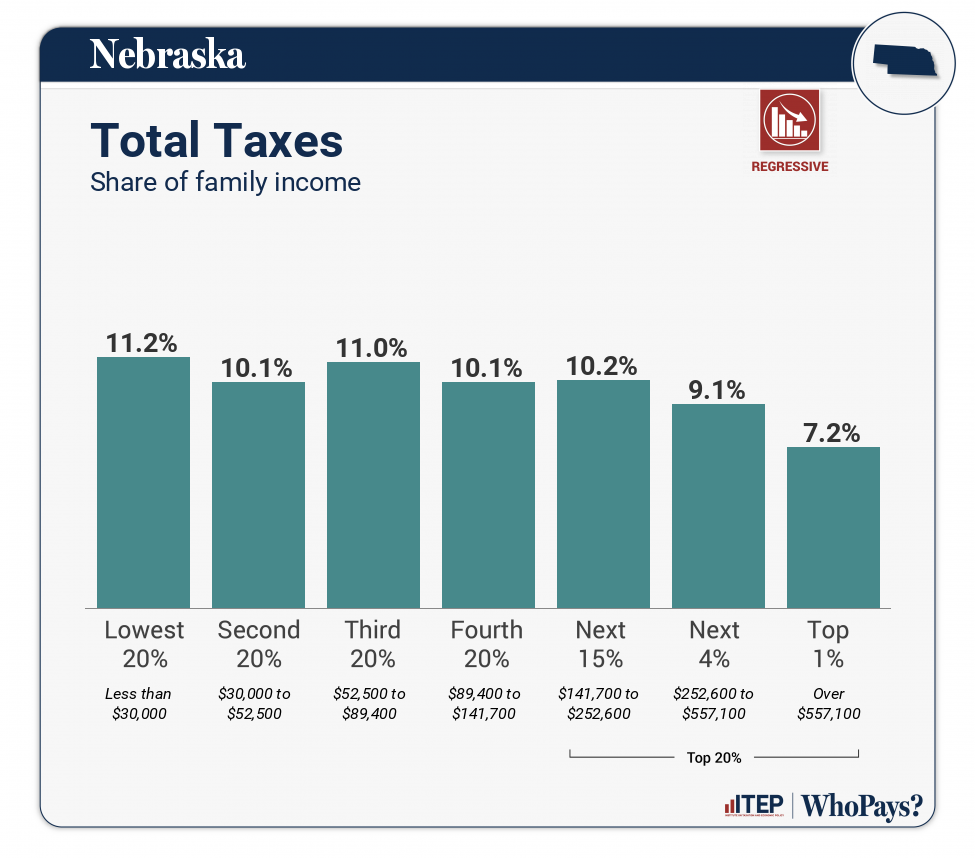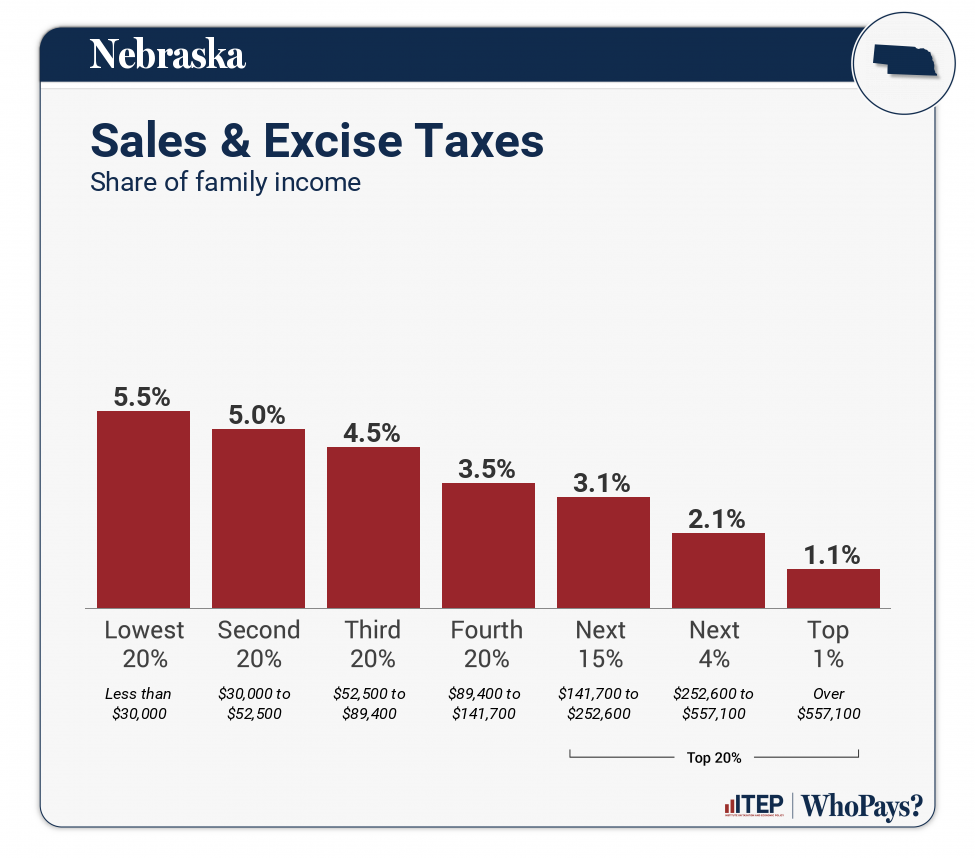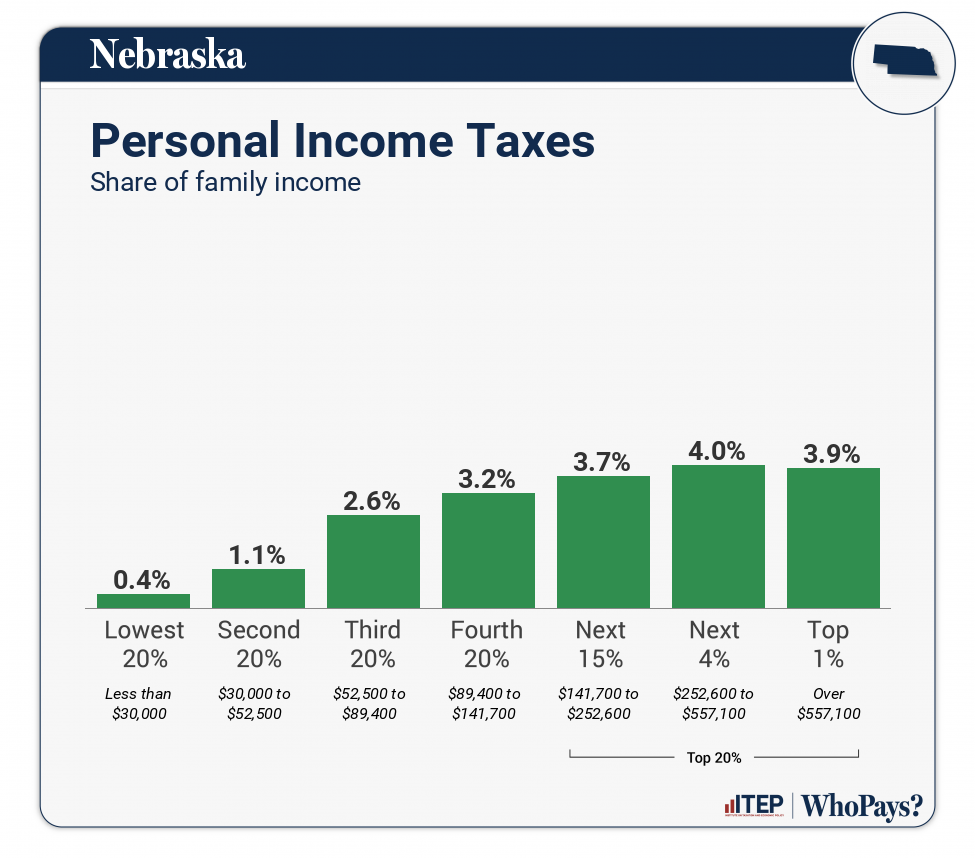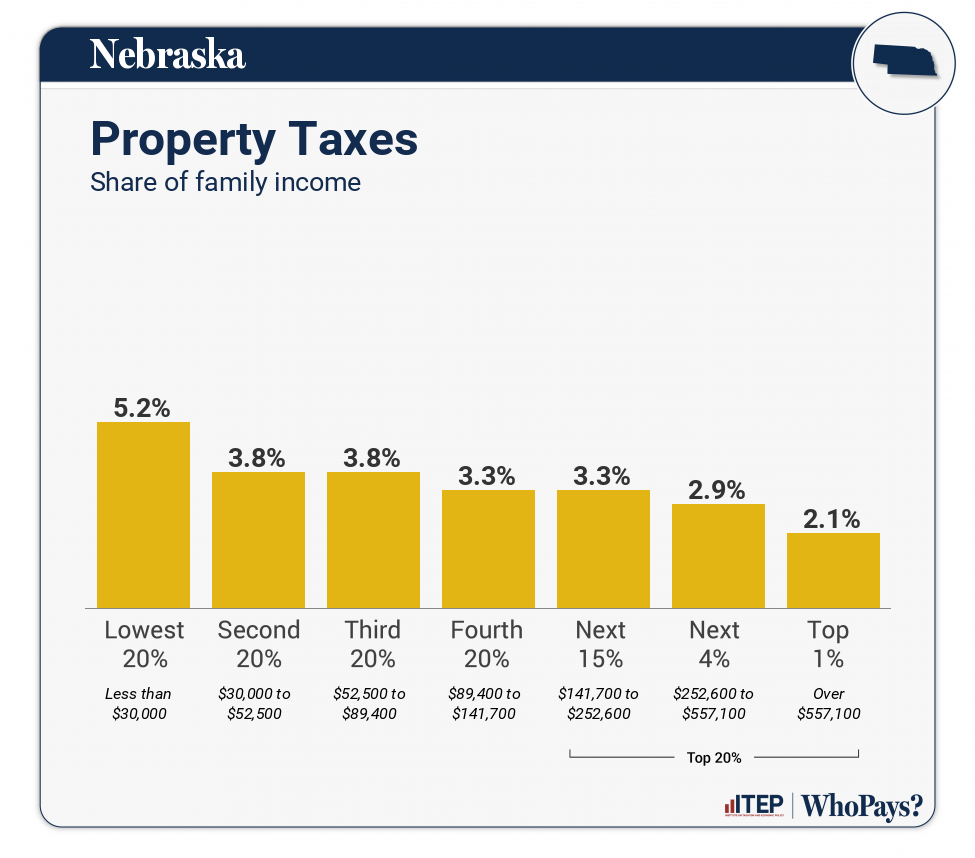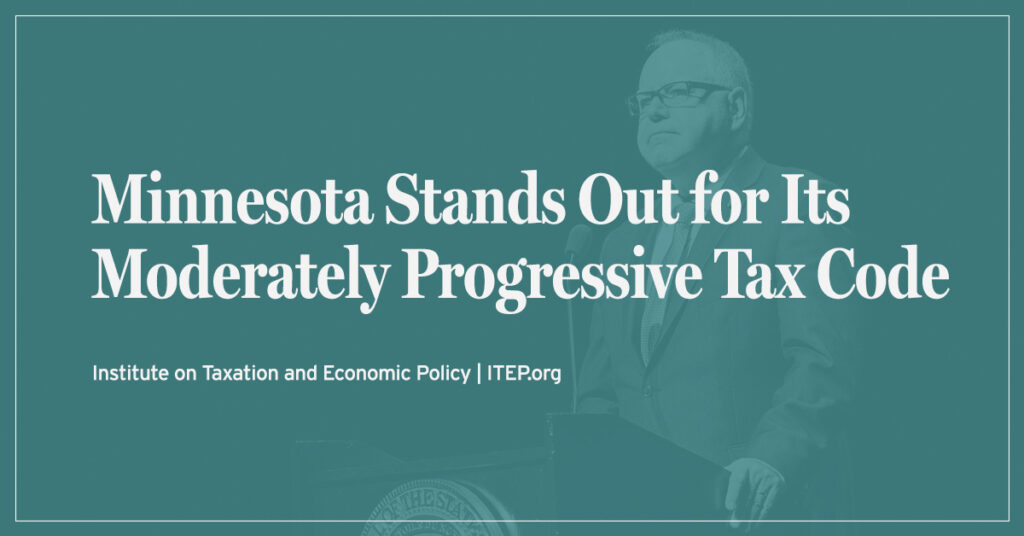
Nebraska
Download PDF
State and local tax shares of family income
| Top 20% | |||||||
| Income Group | Lowest 20% | Second 20% | Middle 20% | Fourth 20% | Next 15% | Next 4% | Top 1% |
| Income Range | Less than $30,000 | $30,000 to $52,500 | $52,500 to $89,400 | $89,400 to $141,700 | $141,700 to $252,600 | $252,600 to $557,100 | Over $557,100 |
| Average Income in Group | $16,400 | $41,500 | $67,500 | $112,500 | $174,900 | $361,600 | $1,244,900 |
| Sales & Excise Taxes | 5.5% | 5% | 4.5% | 3.5% | 3.1% | 2.1% | 1.1% |
| General Sales–Individuals | 2.9% | 2.9% | 2.6% | 2% | 1.7% | 1.1% | 0.4% |
| Other Sales & Excise–Ind | 1% | 0.6% | 0.5% | 0.4% | 0.3% | 0.2% | 0.1% |
| Sales & Excise–Business | 1.6% | 1.5% | 1.4% | 1.2% | 1.1% | 0.9% | 0.6% |
| Property Taxes | 5.2% | 3.8% | 3.8% | 3.3% | 3.3% | 2.9% | 2.1% |
| Home, Rent, Car–Individuals | 4.1% | 2.9% | 2.9% | 2.3% | 2.3% | 1.7% | 0.8% |
| Other Property Taxes | 1.1% | 0.9% | 1% | 0.9% | 1% | 1.2% | 1.3% |
| Income Taxes | 0.4% | 1.1% | 2.6% | 3.2% | 3.7% | 4% | 3.9% |
| Personal Income Taxes | 0.4% | 1.1% | 2.6% | 3.2% | 3.7% | 4% | 3.9% |
| Corporate Income Taxes | 0% | 0% | 0% | 0% | 0% | 0% | 0% |
| Other Taxes | 0.2% | 0.1% | 0.1% | 0.1% | 0.1% | 0.1% | 0.1% |
| TOTAL TAXES | 11.2% | 10.1% | 11% | 10.1% | 10.2% | 9.1% | 7.2% |
| Individual figures may not sum to totals due to rounding. | |||||||
ITEP Tax Inequality Index
ITEP’s Tax Inequality Index measures the effects of each state’s tax system on income inequality. According to this measure, Nebraska has the 30th most regressive state and local tax system in the country. Income disparities are larger in Nebraska after state and local taxes are collected than before. (See Appendix B for state-by-state rankings and the report methodology for additional detail.)
Tax features driving the data in Nebraska
|
Graduated personal income tax structure, though top rate kicks in at $35,380 (single) so a large share of families face top rate; scheduled changes will lower that threshold further
Requires combined reporting for the corporate income tax; some foreign tax haven income is partially taxed through GILTI inclusion
Partially refundable dependent care tax credit
Refundable Earned Income Tax Credit (EITC)
Levies a county-level inheritance tax
Sales tax base excludes groceries
|
|
|
No property tax “circuit breaker” credit for low-income, non-senior taxpayers
Real estate transfer tax does not include higher rate on high-value sales
Comparatively low Earned Income Tax Credit (EITC)
No Child Tax Credit (CTC)
|

